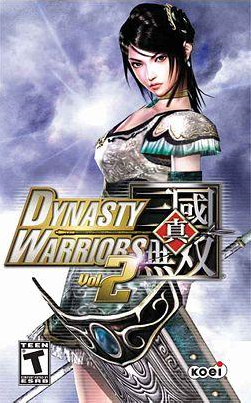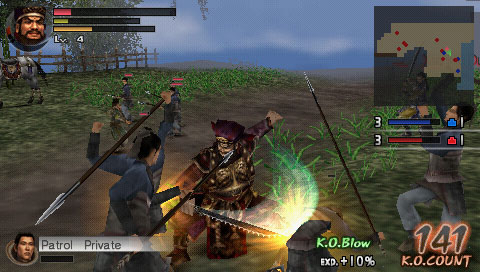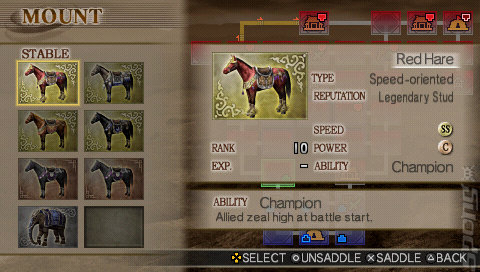Now That's a Sequel!

I have a bit of a like-dislike relationship with the Dynasty Warriors franchise. On the one hand, it is still really cool to slice up hundreds of thousands of enemies in a battlefield to take control of Han Dynasty China. On the other hand, the simplistic combat system and (most importantly) the lack of meaningful upgrades from game to game bothers me. This sentiment about the franchise as a whole gets us to our subject of today: Dynasty Warriors Volume 2. Not long ago I have written a review for the first PSP Dynasty Warriors game. Long story short I thought that product was less than impressive. However, Volume 2 is a different story for the most part. This game is what you want out of a sequel; improvements in major areas/previous weaknesses.
Now comes the gameplay, the specific portion of the game that drew as many fans as detractors. I came away mostly impressed with the changes Volume 2 made. While no one will mistake Warriors' gameplay with that of a God of War or Devil May Cry, there is still a lot to like.

For starters, the game has increased in difficulty but not so much that things feel cheap. In the first game it's almost impossible to lose by having the player's commander (which is like the king in chess) die in battle. In Volume 2, however, losing the main commander to fighting is a major risk. Opposing armies move much faster around the grid-like battlefield, and so at least 1-2 assaults on the commander's location is possible in every mission. Since your commander is nothing but a low level fighter in most cases the player has to make it a priority to protect him or otherwise risking a game over.
Volume 2 also added another element against the player: A time limit. Back in the first game the time limit (called the amount of supplies) is pretty generous, and it was not a cause of concern. In Volume 2, however, the limit is more stringent. Now moving from square to square in the battlefield itself takes time, and supply centers (where you either gain or lose time) are more frequently raided. Players now have to balance between dragging out a mission by capturing all the points to prevent the chance of defeat and finishing the mission as soon as possible before the time runs out.
But Volume 2 didn't just address some major issues; it expanded on a lot of ideas it had the first game to great effect. For instance, before every mission the player is allowed to take up to 4 officers. Before they are merely more than afterthoughts or meat shields, but in this game choosing the right officers will now make or break the player. Because stats do not increase by level in Volume 2, the player is now highly dependent on the officers for increased stats (for instance, the average attack of a character is roughly 35, but with one really good officer that can go all the way up to 135!) Since there are over 200 officers (some that increase 1 stat a lot and others 4 stats evenly) there is a lot to choose from.

Even more importantly, officers can grow. At the end of a mission players can assign EXP to officers, promoting them from level 1 all the way up to 10. As the levels go up the officers' stat contributions increase as well (from adding x life to x+50 life by level 5). The only problem from this system is that by 5 hours in players will have a set rotation of officers. But I give credit to KOEI for making a pre-existing formula better.
Another step forward the game made has to do with mission branching, which is actually unique even from the console games. Most missions have two ways to achieve victory (the usual objectives are killing enemy commanders and capturing a certain point on the map). Players can receive different missions by completing missions in different ways, so there is usually a difference every time you finish Musou mode (the main campaign mode).
A final note: There are hidden spots in the majority of the missions, each with an officer that needs to be beaten to be unlocked. Once a mission is considered complete (by this I mean beat the mission in all possible manners, unlock all hidden spots) there are then more secret stages and/or characters unlocked.
If you didn't realize this already, there's a lot to dig through in Dynasty Warriors Volume 2. While the main combat system remains similar to all the other games in the franchise, this installment manages to find a way to pack a lot of content which requires multiple playthroughs. If you either enjoy or can stomach the main fighting, Volume 2 has a lot of replay value, and it's worth considering as a purchase.
Pros:
- Lots of content
- Increased (and fair) difficulty
- Strong jumps in presentation
Cons:
- Still (somewhat) repetitive combat
- Flat narrative
Final Verdict: Volume 2 is better than its predecessor in every which way. Arguably the best Dynasty Warriors game o the PSP.
